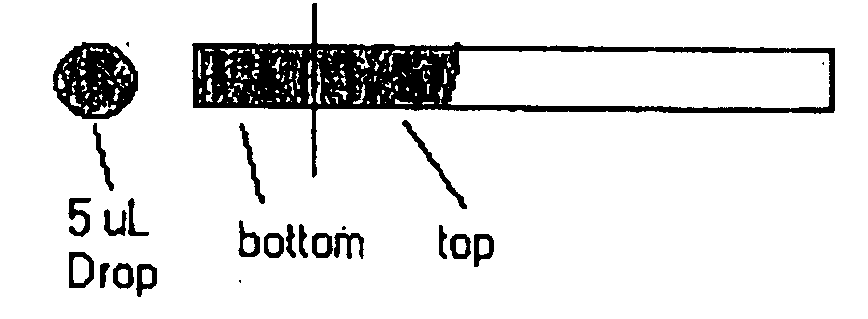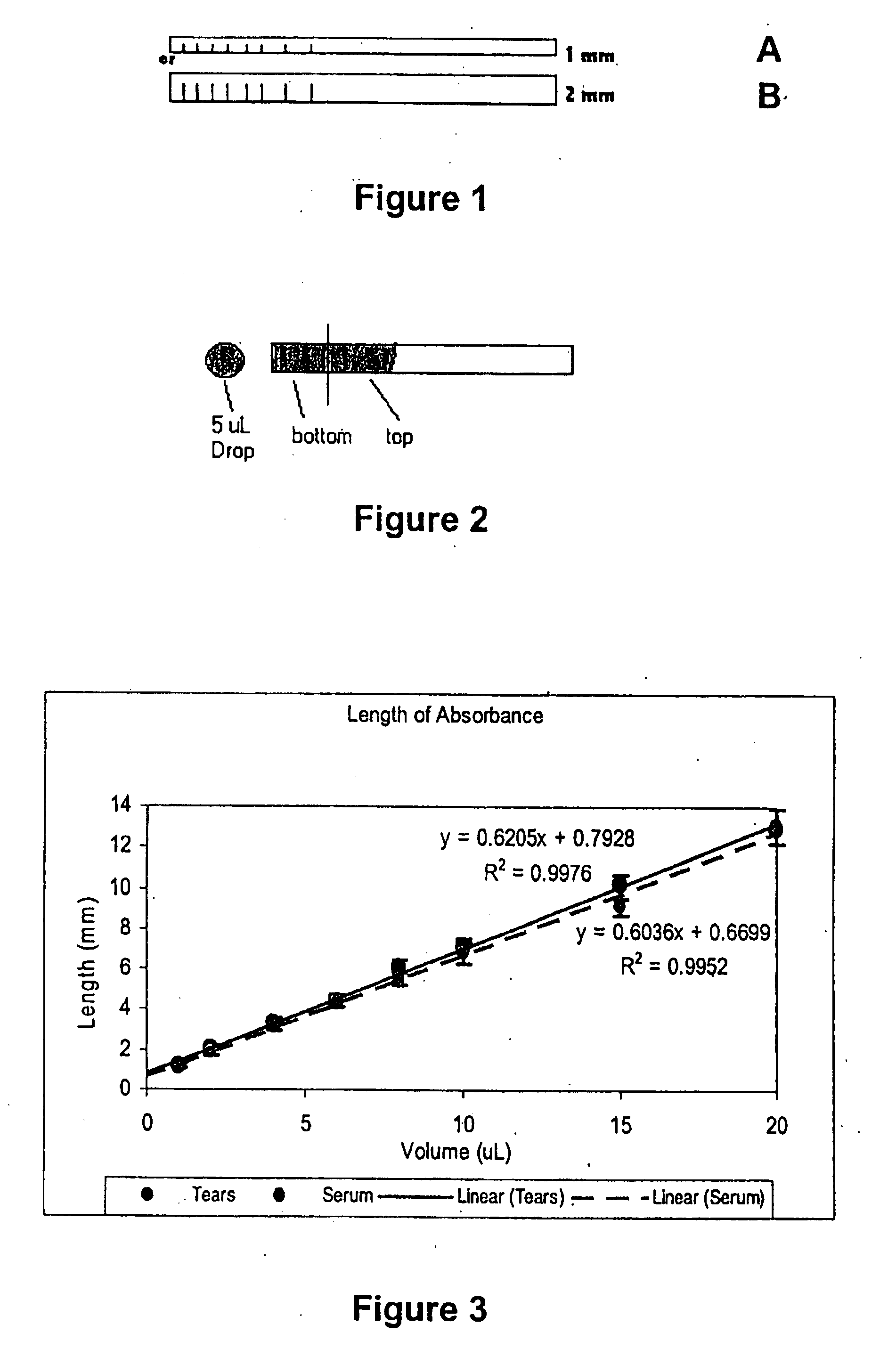Methods and kits for assays of analytes of interest in tears
- Summary
- Abstract
- Description
- Claims
- Application Information
AI Technical Summary
Benefits of technology
Problems solved by technology
Method used
Image
Examples
Example
EXAMPLE 1
[0070] Poly(vinyl alcohol) (PVA) material is supplied by Ultracell. Wicks (strips) are prepared to have a dimension of 1.5 mm in width, 1.0 mm in depth and 30 mm in length as shown in FIG. 1. One of the two ends of a wick is dipped in a known volume of sample, such as tear, serum or phosphate buffer (PBS) (ca. pH 7.2). When a sample is absorbed (wicked) by the wick, the uptake on the wick is clearly visible. The length of the wicked portion of the wick for a given volume of sample is measured. This experiment is repeated 20 times. Reproducible linear curves are obtained, as shown in FIG. 3. The linear relationship between the length of the wicked portion of a PVA wick and the volume of uptake on the PVA wick is L (μl)=0.6205·Vol+0.7928 and L (μl)=0.6036·Vol+0.6699 respectively for tear and serum. The R2 values for tears and serum both are 0.99. The reproducibility of volume uptake is not as easily observed in three other design iterations including three cylindrical PVA wi...
Example
EXAMPLE 2
[0072] PVA wicks are prepared as described in Example 1. Three glucose solutions are prepared by dissolving glucose respectively in three media, PBS, tear and serum. The concentration of glucose is 150 mg per 100 ml. A wick is dipped in 5 μl of a glucose solution. After all of the solution is absored (wicked) by the wick, the wicked portion of the wick is cut in half. Each half (shown in FIG. 2) is then assayed for glucose using the commercially available Trinder assay from Sigma.
[0073] Results are shown in FIG. 4. Glucose in each of the three solutions is taken up by wicks. However, there is difference in the glucose uptake between the bottom half (i.e., containing the dipping end of the wick) and the top half. Such difference depends on the presence of other chemicals, for example, such as proteins, in a medium for preparing a glucose solution under study. The biggest difference is observed in the case where serum is used in preparation of glucose solution. However, it ...
Example
EXAMPLE 3
[0074] Tear samples have been collected from subjects using PVA wicks and glass capillary tubes in order to be assayed for total protein. It has been discovered that tear collection is much easier and faster using wicks. More tear fluid can be collected by means of PVA wicks in a shorter period of time compared to glass capillary tubes.
PUM
 Login to View More
Login to View More Abstract
Description
Claims
Application Information
 Login to View More
Login to View More - R&D
- Intellectual Property
- Life Sciences
- Materials
- Tech Scout
- Unparalleled Data Quality
- Higher Quality Content
- 60% Fewer Hallucinations
Browse by: Latest US Patents, China's latest patents, Technical Efficacy Thesaurus, Application Domain, Technology Topic, Popular Technical Reports.
© 2025 PatSnap. All rights reserved.Legal|Privacy policy|Modern Slavery Act Transparency Statement|Sitemap|About US| Contact US: help@patsnap.com



